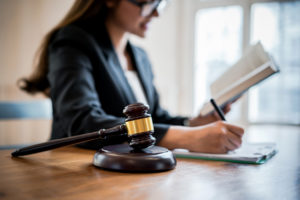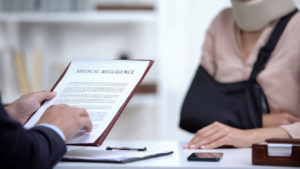It’s important to remember that vehicle damage isn’t the only factor when figuring out who was at fault in a car accident. Weather conditions, physical evidence, and details from the police report and witnesses play a significant role as well. Insurance companies typically look at the circumstances of the accident and the laws of the state where the accident occurred when determining who is at fault. And even though accidents typically involve a degree of fault shared by all parties, lawyer for an accident can help you determine who was most negligent at the time of the accident.
In this guide we’ll cover how insurance companies determine fault in car accidents and what to do and not to do when you are at fault.
Is Your State A Fault or No-fault State?
As the vast majority of states assign fault to the driver, the person who caused the accident will have to pay for damages. In most states, bodily injury (BI) liability insurance covers the other driver’s medical expenses, while property damage liability covers the other driver’s car repairs. Payout amounts will vary from state to state.
Personal injury protection (PIP) insurance is required in “no-fault” states. Medical expenses are covered regardless of who is at fault in a car accident with this type of coverage. It also saves both drivers time and energy because they don’t have to file a claim with one another’s insurance. One downside of PIP, however, is its price. It is still possible to obtain PIP insurance as an optional coverage, even if your state does not require it.
How Does Car Insurance Work When You Are At-fault For an Accident?
Only “tort states,” those that don’t mandate PIP insurance for motorists, have accidents where one party is found to be at fault. Insurance groups will follow the laws of the state where the accident took place. At-fault accident insurance states require the driver who is found to be at fault to cover all losses, including medical bills and property damage charges. In most states, injury costs are covered by the at-fault driver’s auto insurance policy. It’s important to note that PIP coverage does not cover expenses for damaged personal items as a result of auto accidents. The at-fault driver is still liable to cover those damages.
What To Do If You’re At-fault
When an accident occurs, it is not your responsibility to point fingers, accuse others, or accept blame. It is important that you check if anyone needs assistance right away after the accident. If necessary, call an ambulance and provide first aid. However, once you are confident that everyone is safe, the first thing you need to do is contact a lawyer for an accident.
Do Not Leave the Scene
For safety reasons, you may need to relocate your vehicle out of a crossroads or heavy traffic area, but do not abandon the area. Additionally, you should never chase a car that tries to flee the scene of an accident; instead, you should wait for the police to show up and inform them of what happened.
Gather Evidence
Before the vehicles are moved out of the way of traffic, it is helpful if you can take pictures of the accident to record the accident’s effects on the vehicle and any other relevant details. Obtain information on the drivers’ license plate numbers, the time of day, the flow of traffic, and any potential road dangers. Try to gather names and contact information from any witnesses if there are any. Of course, you’ll also need the name, address, and insurance information of the other driver.
Avoid Admitting Fault
Based on all the information and reports from all parties involved in the accident, including any witnesses, the police and insurance companies will determine who is at fault on their own. Your insurance company might also consult a lawyer for an accident to help them determine who is at fault.
Try to avoid admitting fault, even if you find it difficult.
Don’t say “it’s my fault,” just report the facts as you observe them.
Avoid lying.
Call Your Insurance Company
You should inform your insurance provider of the accident as soon as possible. In addition to helping, you file the first claim, your agent may show you how to gather evidence at the scene and explain your auto insurance coverage. Tell them the basic facts about the accident, like where it happened, and then ask what you should do. Find out how to begin the claim filing process.
Remember to consult an attorney before contacting insurance companies.
Obtain Police Report
Your agent would inform you if the police responded to the accident scene and filed a report. They will determine whether they want you to obtain the report or whether they will do so on your behalf.
How the Fault is Determined in Car Accidents
In the majority of states, an accident is blame-based, which means that someone is to blame or negligent, even if blame is shared by the drivers. Your insurance company will assess the specifics of the accident to determine who was at fault. They will analyze site-specific information, such as photographs and other physical evidence of damage.
Adjusters listen to what those involved in the accident say and, if possible, compare it to third-party eyewitnesses’ statements. Additionally, they will examine the police report for information on the parties’ careless driving actions. The appropriate state laws that define negligence will be followed by insurance providers in jurisdictions where no-fault accident insurance is mandated. This is significant because different states have different laws and standards when it comes to determining fault. The responsibility for a car accident is frequently shared. When both drivers are careless and an accident happens, each driver will be given a certain percentage of the blame.
Make sure you have a lawyer for an accident whether you are at fault on a car accident or not.
Accidents happen, and we are here to help you recover and get back on track. Call 1-800-HURT-511 now to receive a free case evaluation from one of the top NYC attorneys.





 Trusted Reviews
Trusted Reviews



